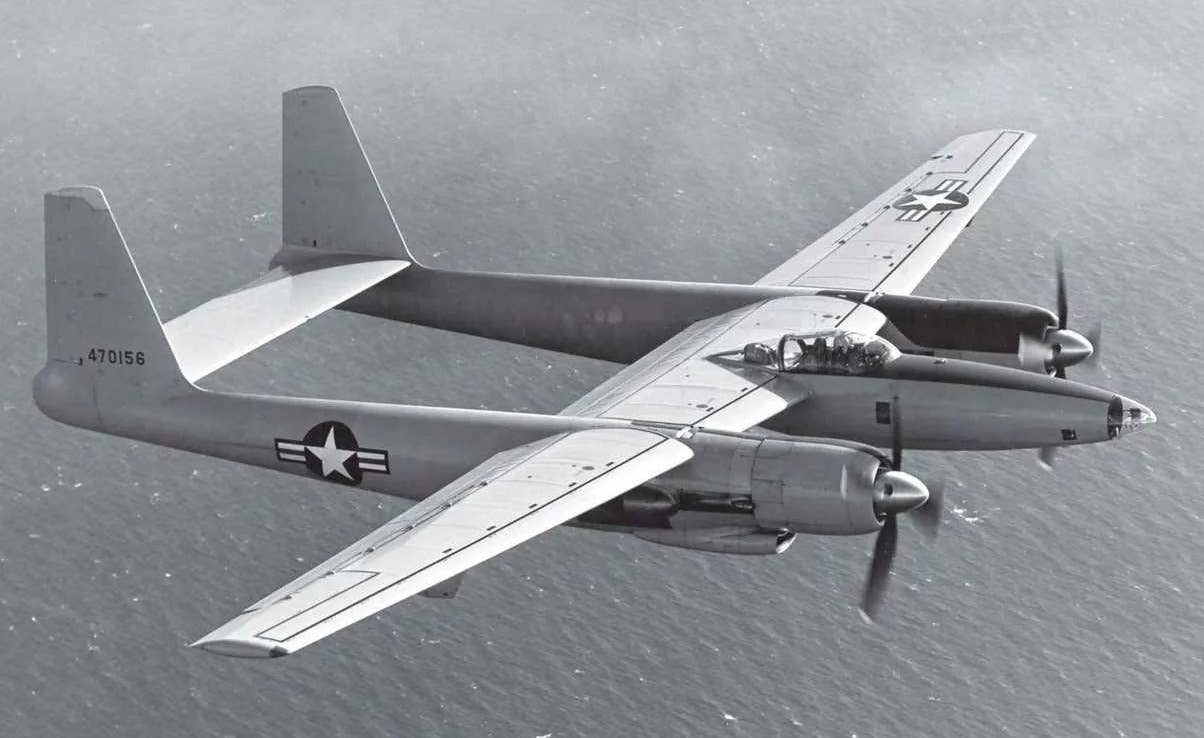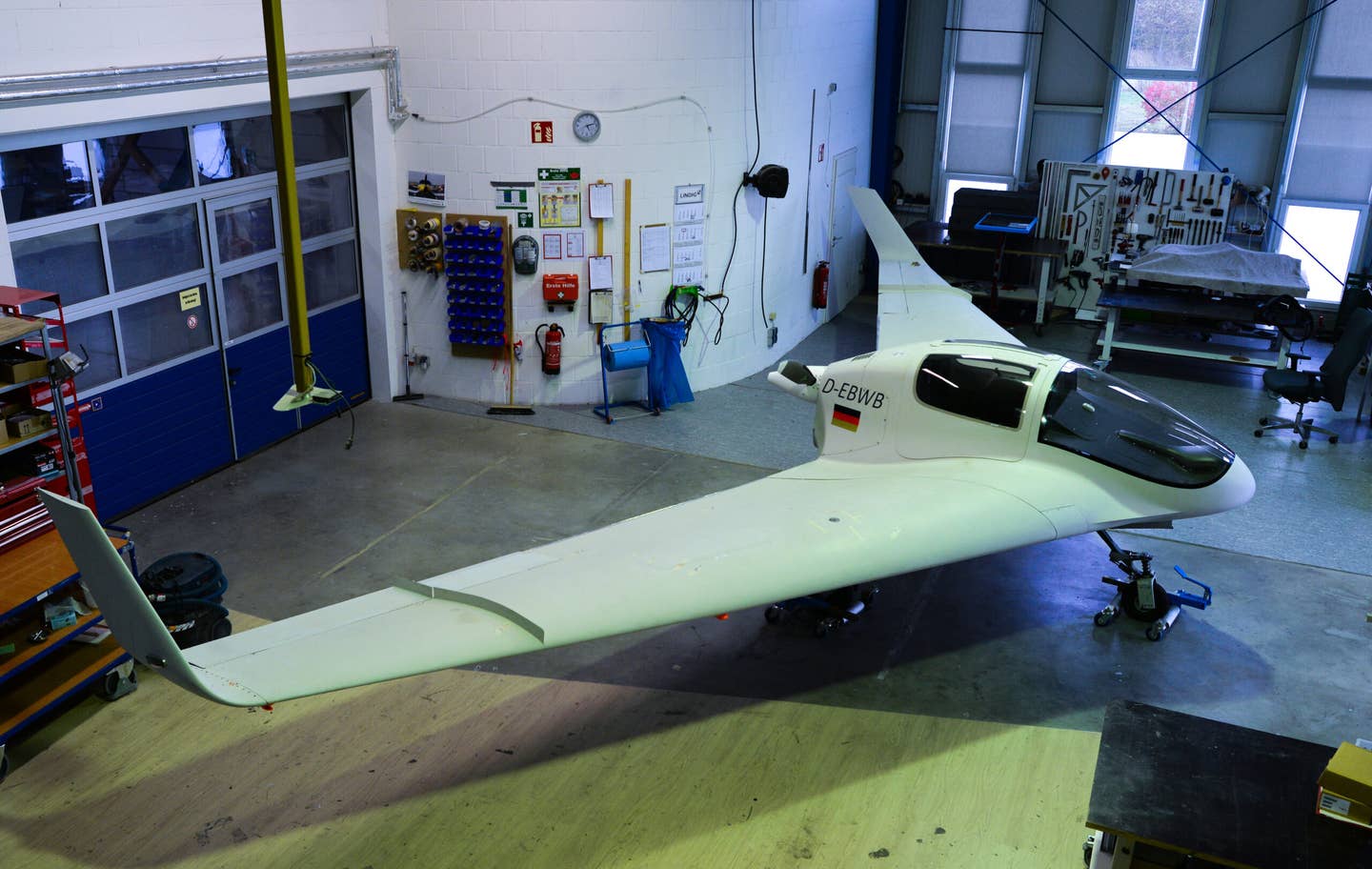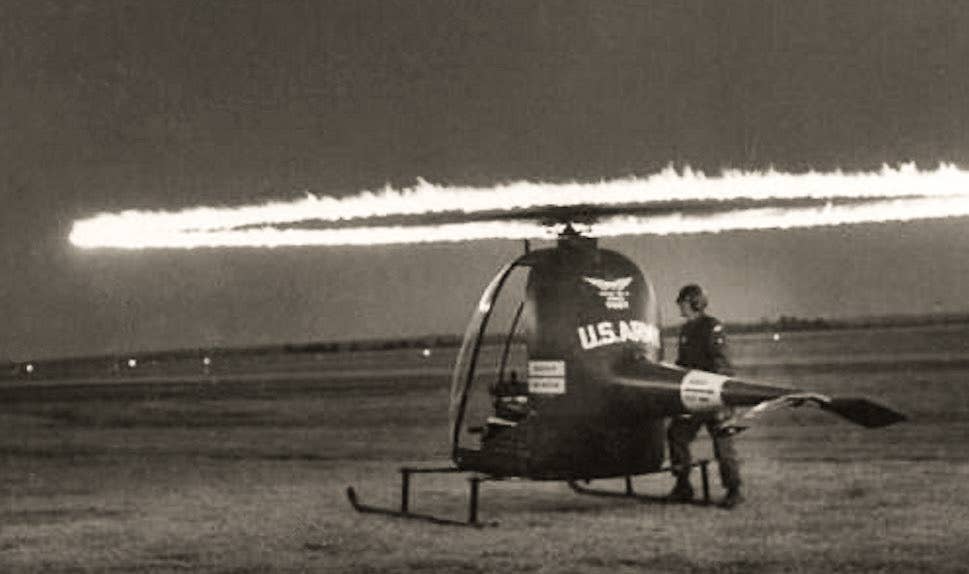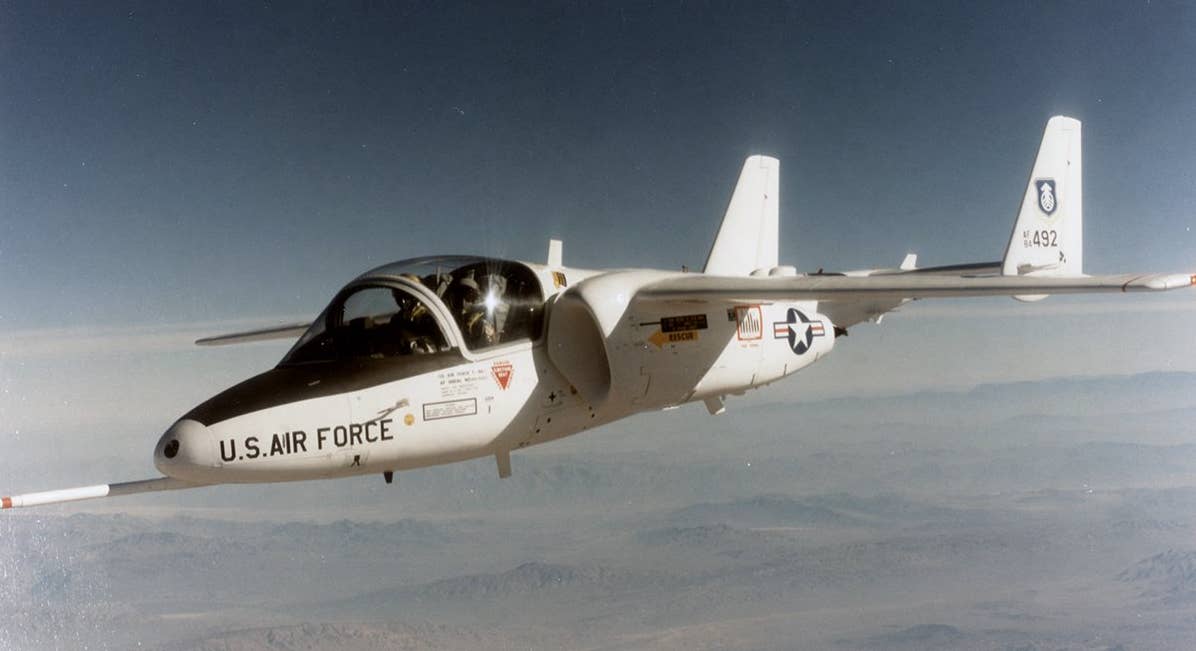The Bold, Bulbous Douglas Cloudster II
This unconventional 1940s twin-powerplant, pusher-propeller GA aircraft design featured a large forward fuselage, room for five, and white wall tires.
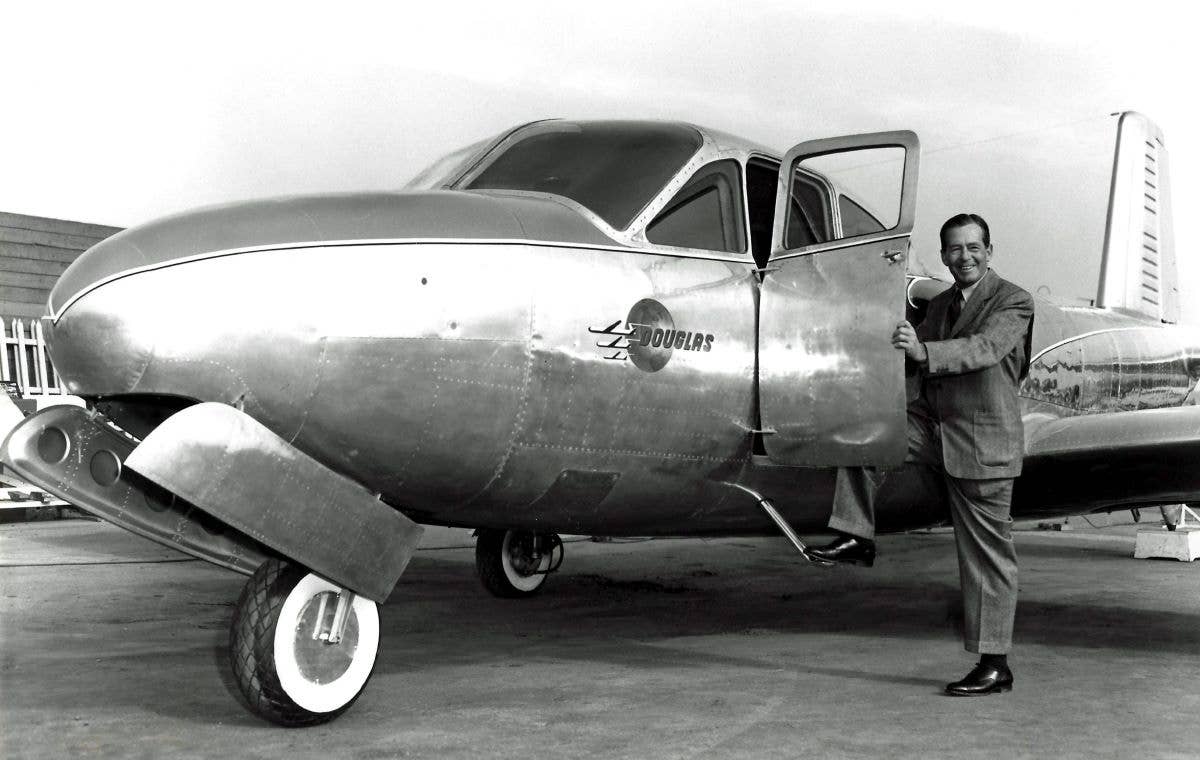
With both engines buried in the aft fuselage section, the nose and cabin of the Douglas Cloudster II were voluminous. Whitewall tires added a touch of style. [Courtesy: Douglas Aircraft Company]
For a few years in the mid-1940s, the Douglas Aircraft Company pursued a decidedly unconventional design concept.
It would entail multiple powerplants, long drive shafts, and pusher propellers mounted on the extreme aft end of an aircraft. Well-stocked from the war effort with a robust team of engineers and faced with a dwindling number of military contracts, the company tasked a team to investigate and develop the concept.
The company’s first attempt at integrating the new design resulted in the XB-42 “Mixmaster”—an experimental military bomber with twin contra-rotating propellers mounted to a common drive shaft. Although the company built and flew two examples, the military quickly lost interest in piston engines, and Douglas pivoted, ultimately reworking the XB-42 into the jet-powered XB-43. Neither aircraft would advance beyond the development stage.
Undeterred, Douglas unveiled a proposal for the same twin-powerplant, pusher-propeller concept in 1945, which was applied to a conceptual airliner. Called the Douglas DC-8 “Skybus,” it would utilize the same Allison V-12 engines as in the XB-42, this time buried in the forward fuselage section and linked to the aft propellers with a series of shafts that extended nearly the entire length of the 77-foot aircraft. The Skybus never left the drawing board.
Douglas would try one last time to make the unconventional design work, this time in the form of a 39-foot-long, 5,085-pound, five-passenger GA aircraft. With a large, bulbous forward fuselage section and low wing, the Cloudster II housed two 6-cylinder Continental piston engines behind the passenger compartment. Douglas designed the aircraft around two 250 hp engines but explained in a 1947 press release that it would be flown initially with 200 hp engines until the more powerful ones became available.
As unique as the pusher design was, it was not without precedent. Just two years earlier, Lockheed had built and flown its Model 34 “Big Dipper,” and WACO’s Aristocraft made its first flight only a few months before the Cloudster II. The companies touted many of the same theoretical advantages, including unrestricted visibility from the cabin, no spiraling slipstream effect from a forward-mounted (tractor) propeller, and a quieter cabin.
Moulton Taylor, the designer of the similarly configured roadable “Aerocar” that would fly a couple of years later, added that at idle a propeller mounted to the extreme aft end of the fuselage has the effect of an anti-spin drag chute, adding stability and aiding recovery from spins. Taylor defended the pusher configuration passionately, observing, “Who ever saw a boat with a tractor propeller?”
Another benefit of the design had to do with controllability in the event of an engine failure. Like the Cessna Skymaster, the Cloudster II utilized centerline thrust, meaning that if an engine failed, the remaining engine could power the aircraft without introducing asymmetric thrust and the associated handling challenges. Of course, because the Cloudster II utilized just one prop and drive shaft, a single point of failure of any of these components would leave the aircraft entirely unpowered, illustrating the lack of redundancy compared to a traditional twin.
When the Cloudster II finally flew, it encountered problems that were both predictable and serious. The lengthy drive shafts produced significant vibration through the airframe, a problem that would require careful engineering and multiple isolation units to address. Additionally, the location of the engines mounted side by side, deep within the airframe, introduced cooling issues. While more airflow could be ducted onto the engines easily enough, this would come at the expense of significant drag.
- READ MORE: The Ryan YO-51 Wowed with STOL Performance
Ultimately, development of the Cloudster II was abandoned in late 1947. Douglas reportedly donated it to a local Boy Scout troop for ground training before it was scrapped sometime after 1958. The concept was then left for WACO to pursue, also unsuccessfully, with its Aristocraft.
In the early 1960s, Jim Bede attempted to make it work with the Bede XBD-2. Later, in the 1980s, the twin-turboprop Lear Fan 2100 attempted to resurrect the concept yet again, but despite building and flying three examples, it once again fizzled out.

Subscribe to Our Newsletter
Get the latest FLYING stories delivered directly to your inbox

